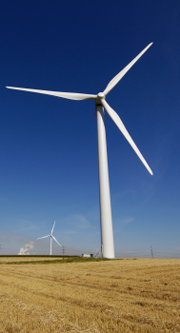
|
 |
||
Since landowners are critical to the success of every wind energy project, building the trust of landowners to secure a site for potential development is one of Airstream Energy’s primary objectives. We commit to listen to you, answer your questions openly and directly, and partner with you to make each project a joint success. We strive to develop projects that will minimize impacts and maximize benefits for all involved. Site Prospecting When we find the right match of wind and transmission resources, we contact landowners within the prospect boundaries. During this time we openly discuss your questions and concerns. Examples include: How much will I get paid? Why is AirStream Energy interested in the my land? When could a project be built? Who is AirStream Energy? We also gather feedback on what items need to be addressed at the community and individual levels. Landowner Option and Lease Agreements The lease gives Airstream Energy the flexibility to move from the development phase to the construction phase if and when the project is ready. In some cases, the project may move from development to construction quickly, but in other cases an extended development period may be needed due to many possible reasons such as: regulatory changes at the state or federal level, timing of future transmission build-outs, slower growth of the market for wind energy in the area, timing for utility requests for wind energy, etc. During the development phase, landowners are typically compensated on a per-acre basis instead of a per-turbine basis because the number of turbines on a particular landowner's property could change depending on the wind resource assessment and other factors. During the negotiations of the land leases, we make frequent visits to the site to ensure good communication between Airstream Energy and our landowners. Testing the Wind Advanced Development Activities Once operational, a wind project provides a consistent and reliable long-term revenue source to landowners that complements their existing land uses. Since royalty payments from wind turbines are immune from the adverse effects of drought, unexpected freezes, volatile crop prices, or insect damage, they can help reduce the cash flow volatility of a landowner’s operation. Land Use email: info@airstreamenergy.com |
For Landowners:
|
|